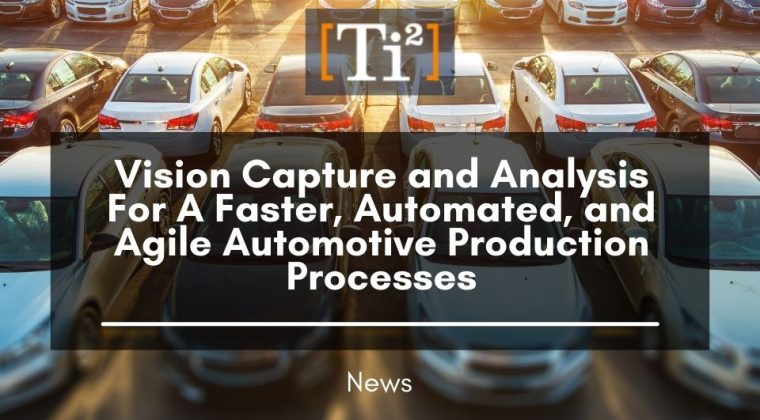
Ti2 has completed a number of vision capture and analysis solutions for an automotive manufacturer. Vision capture has been a smart technology implemented across many real-life detection systems, for example, smart traffic technology with automatic plate recognition, real-time vehicle information display, and up to 200km/h speed capture.
In an automotive manufacturing and production process. There can be defective products and the traditional and conventional quality control checklist processes can’t yield maximum results with a faster timeline.
This is why vision capture was created. Before the product is ready to ship, Ti2 helps automotive companies set up a final image inspection to determine whether all critical components are installed correctly, and to capture the product bar code. If any of these items are missing, an alarm is raised and the product is not able to proceed down the production line.
There are several reasons why each vehicle requires a clear inspection and quality control data recording and measurement. If certain cars are deemed to be accidental, defective, or in any way dangerous to the passenger, that production line and batch will have to experience a call-back. This may be very disadvantageous for both the manufacturer and the consumer, however, is an obligation if any vehicle can cause harm to the buyer.
After the product analysis phase, the product image archiving is the process part where all data are stored and kept for future data requirements.
With Ti2’s implementation, there is a station before products are sealed with their cover. At this stage, critical images are collected and stored in a database, against the product’s unique serial numbers. This assists the end user with Customer Warranty claims after products have been shipped.
A vehicle, or generally a car, basic’s warranty basically includes everything within the car itself. Mechanical components, sound system, external physique, and all the way to electrical components. Warranty usually lasts for 3-5 years with around 60,000 miles limitation, or longer-term with more mile coverage.
During that time, the manufacturer can analyse and find data and all possibly correlated events or products, as well as what inspection history was found during the vision capture and analysis process.
Motion Sensor and Vision Technology
Although motion sensor and vision technology sounds similar and may have similar advantages and benefits. These two technologies are actually different. A motion sensor or a motion detector is a device designed to detect and measure movements, usually used in various security appliances such as CCTV. A motion sensor would detect a movement in an area, and send a signal to the control panel system, then to the monitoring center. It would then alert the user of possible threats or movements.
However, it does not have a programmed system that computes certain actions or formulas based on the rules set out within the machine. With machine vision technology, the objective is not only to detect movements or changes, but to inspect visual conditions, detect detection, positioning, measure, identify, sort, and track parts/products.
Within the machine vision system, there are four types that categorise each major vision capture application.
- Guidance
- Identification
- Gauging
- Inspection
Each is beneficial for different processes in the system, but overall helps manufacturers with the least amount of manpower, time, money, and warranty issue in the long run, especially in the automotive industry.
Another example of a machine vision is inventory management in supermarket aisles or cashiers. It scans products using radio frequency technology, analysing and identifying the barcode with product price information.
Lastly, all data such as codes, images, and product specifications that are archived and kept in the system can then be used to control a process or manufacturing activity, improving, preventing, and optimising future implementation within the manufacturing plant.
Machine vision and computer vision, although different whereas computer vision extract as much data as possible from an object or scene, machine vision focuses on the most critical part of the image. For example the code to each car production to gauge and detect product status.
To simplify your automotive company quality control system, inquire for our extensive case study by contacting us here.
To learn more about what we do and how we can help your industrial motion control requirements, please click projects, products & services.
Ti2 is currently very focused on working with its global partners to secure stock and avoid long delay times in delivering products to their customers. Together with our trusted partners, we are here to provide solutions.
Please click here to email us your inquiry, we would like to hear from you.
